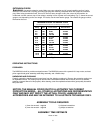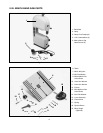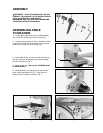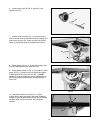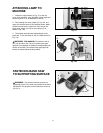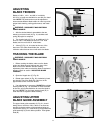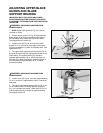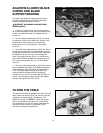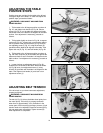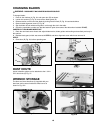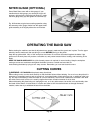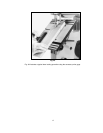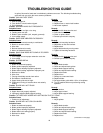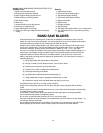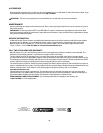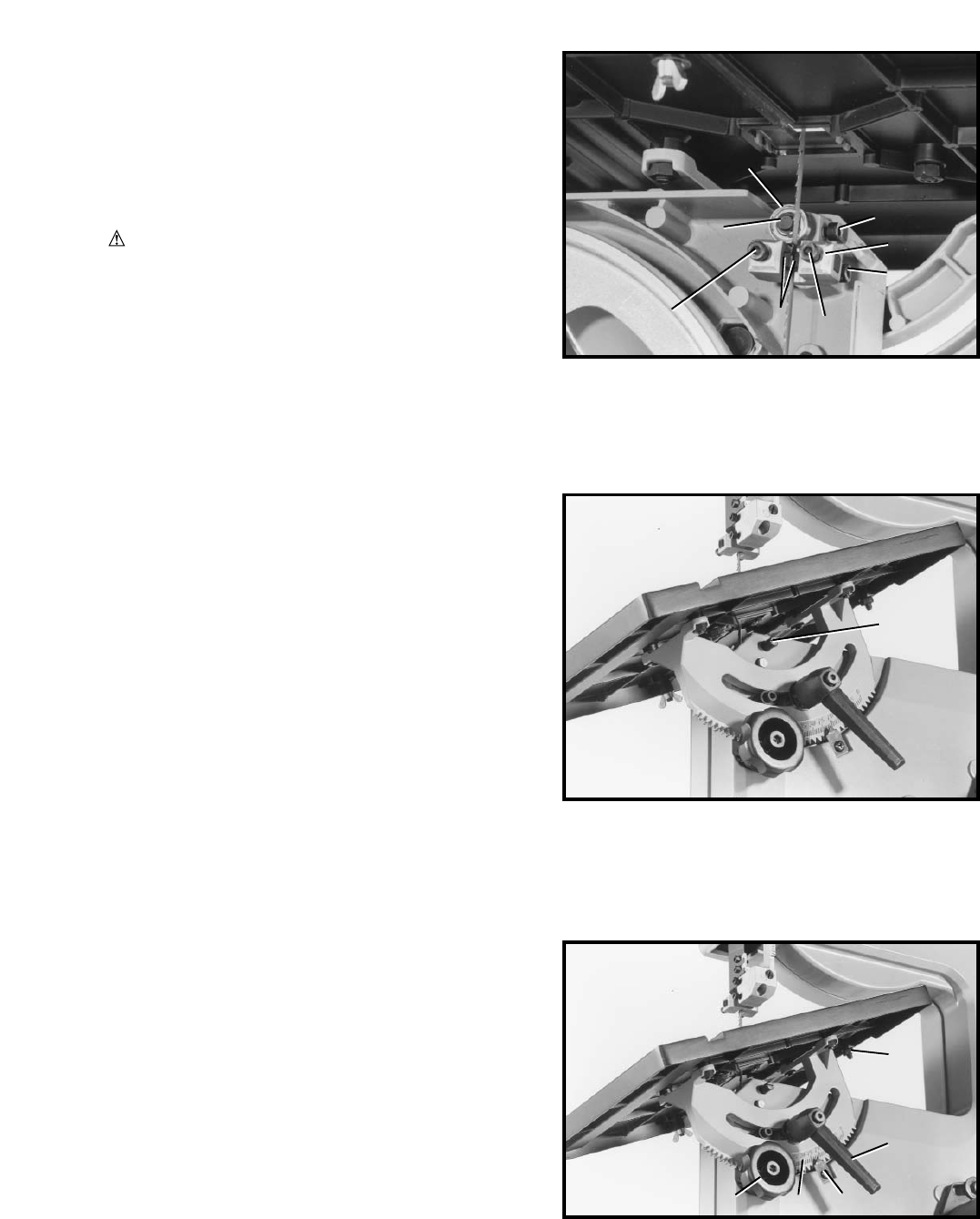
13
ADJUSTING LOWER BLADE
GUIDES AND BLADE
SUPPORT BEARING
The lower blade guides and blade support bearing
should be adjusted at the same time as the upper
guides and support bearings as follows:
WARNING: DISCONNECT MACHINE FROM
POWER SOURCE.
1. Loosen two screws (A) Fig. 24, and move guides
(B) as close as possible to the sides of the blade, being
careful not to pinch the blade. Then tighten the two
screws (A).
2. The front edge of guide blocks (B) Fig. 24, should
be adjusted so they are just behind the “gullets” of the
blade teeth by loosening screw (C), and moving
assembly (D) in or out as necessary. Then tighten
screw (C).
3. The lower blade support bearing (E) Fig. 24, should
be adjusted to support the rear of the blade during the
cutting operation and also prevent the blade from being
pushed too far to the rear which could damage the
blade. The support bearing (E) Fig. 24, should be set
about 1/32 in. behind the blade by loosening screw (F)
Fig. 24, and moving shaft (G) in or out. Then tighten
screw (F).
4. The lower blade support bearing (E) Fig. 24, should
also be adjusted so the back of the blade overlaps the
outside diameter of the ball bearing by approximately
1/8 in. The blade support bearing (E) is set on an
eccentric shaft.To change position of bearing (E),
loosen screw (F) Fig. 24, and rotate shaft (G) Figs. 24
and 25, until the blade properly overlaps the support
bearing. Then tighten screw (F) Fig. 24.
TILTING THE TABLE
The table can be tilted 45 degrees to the right. To tilt the
table, loosen lock handle (A) Fig. 26, and turn knob (B)
clockwise until desired angle is established. Then
tighten lock handle (A). NOTE: The table lock handle
(A) can be repositioned by pulling out on the handle
and repositioning it on the nut located underneath the
hub of the handle. A scale (C) and pointer (D) are
provided to indicate the degree of tilt.
Fig. 24
Fig. 25
G
G
E
F
D
C
A
A
B
Fig. 26
E
A
D
C
B



